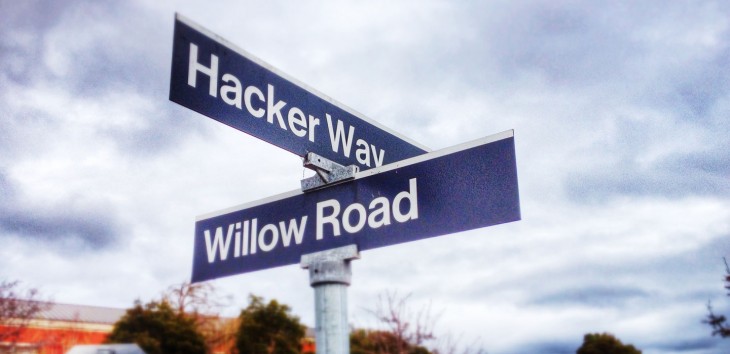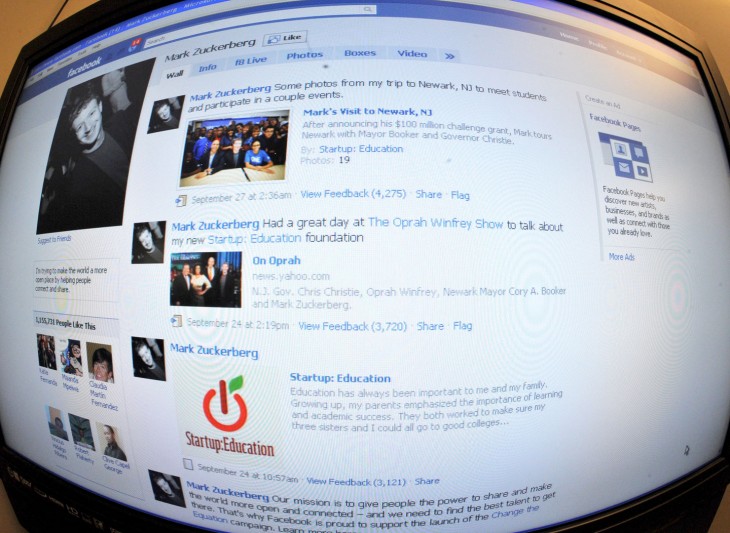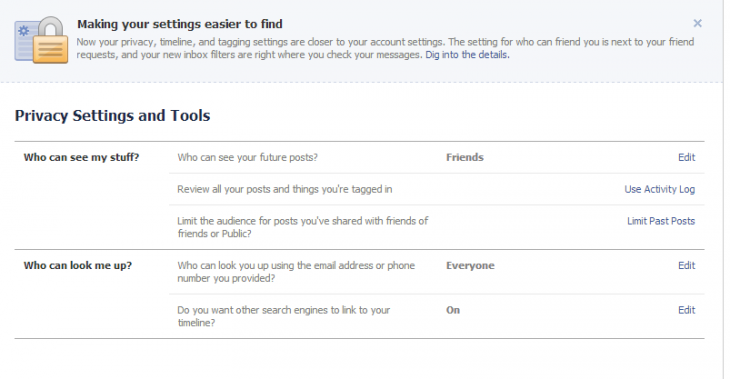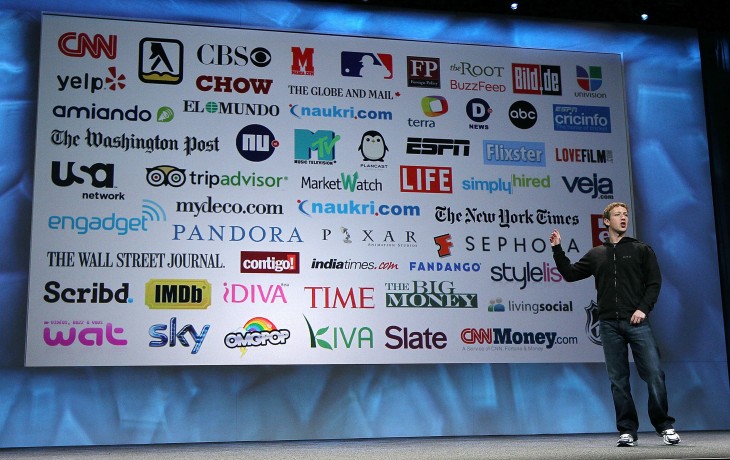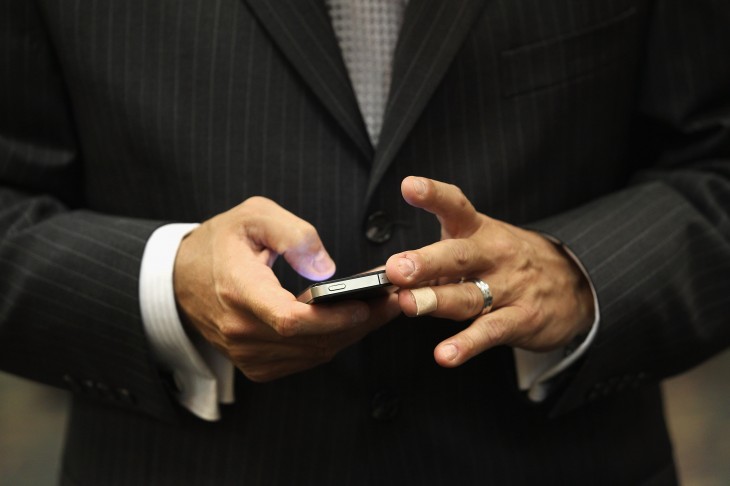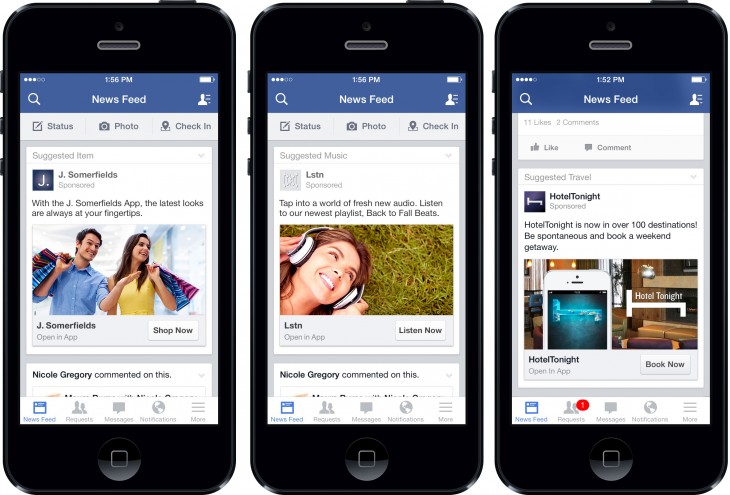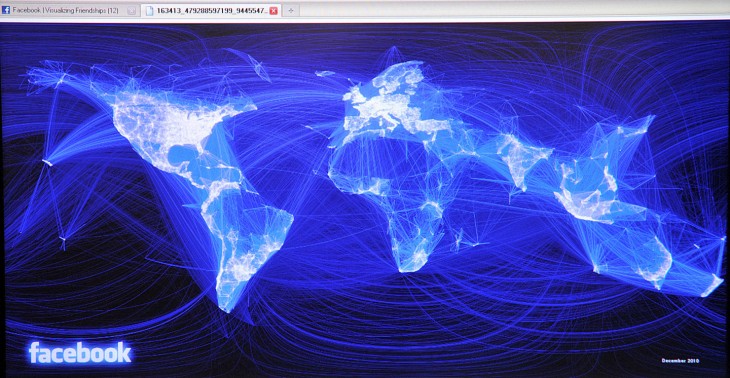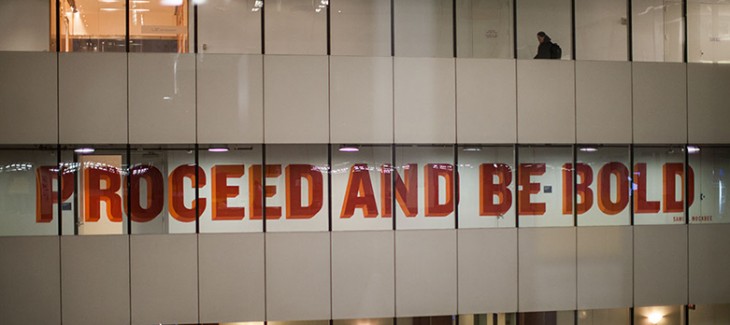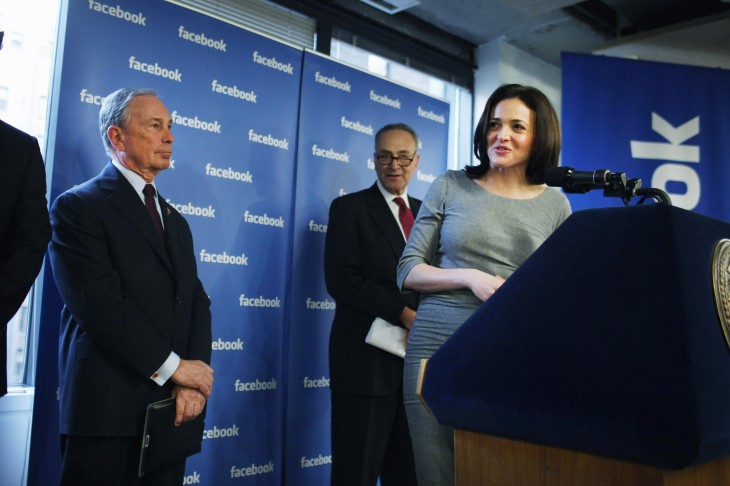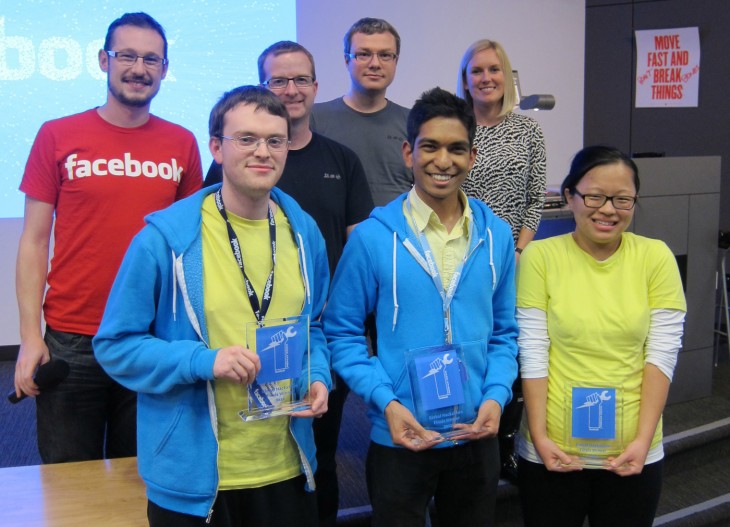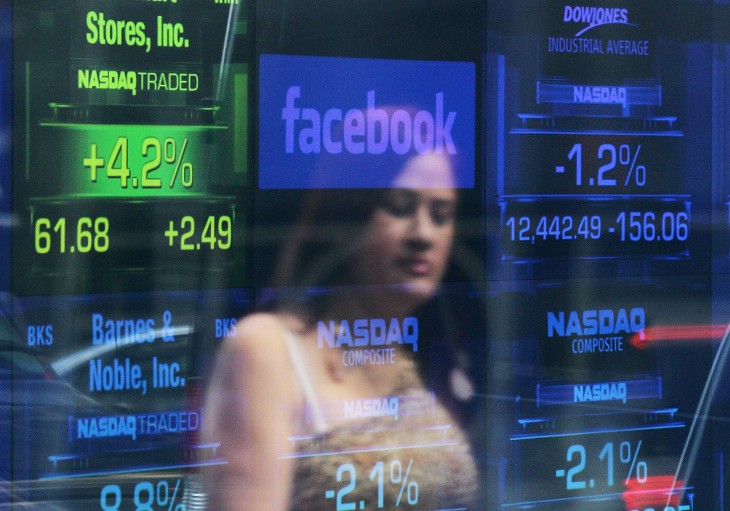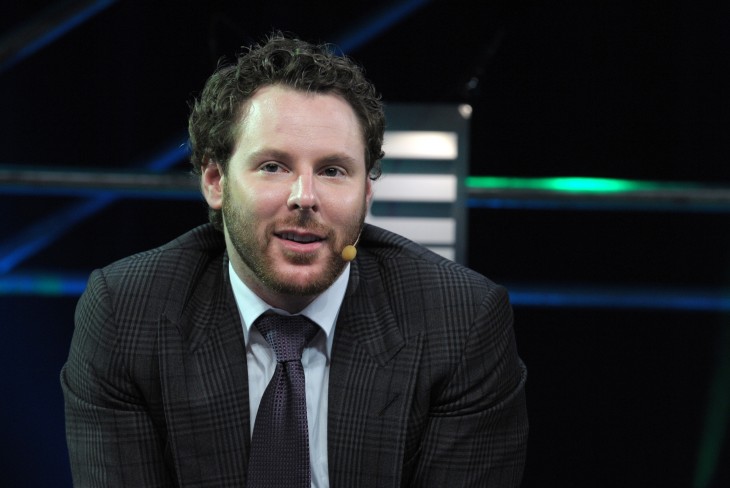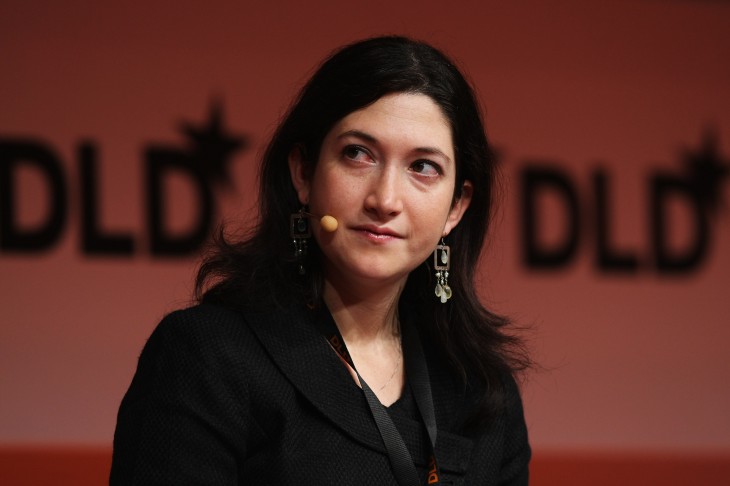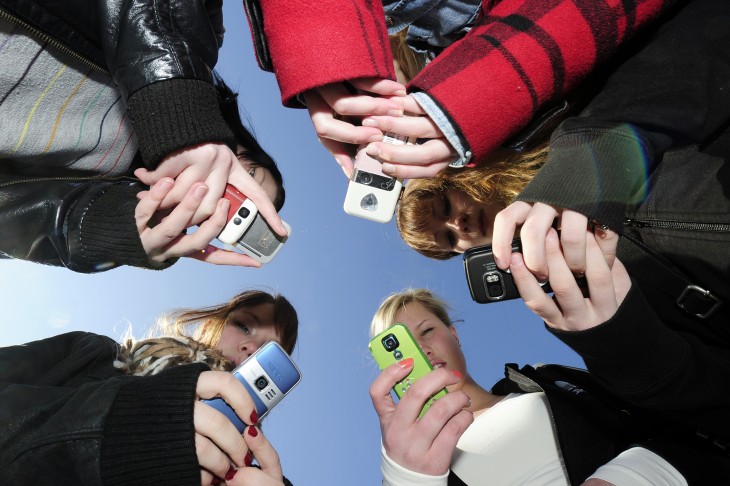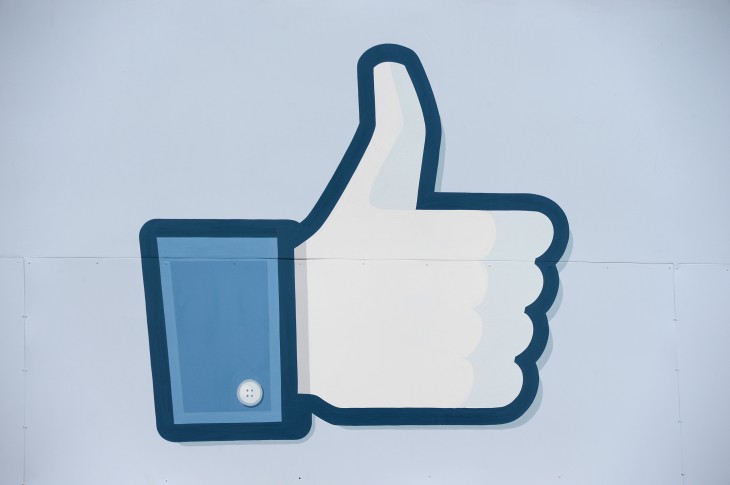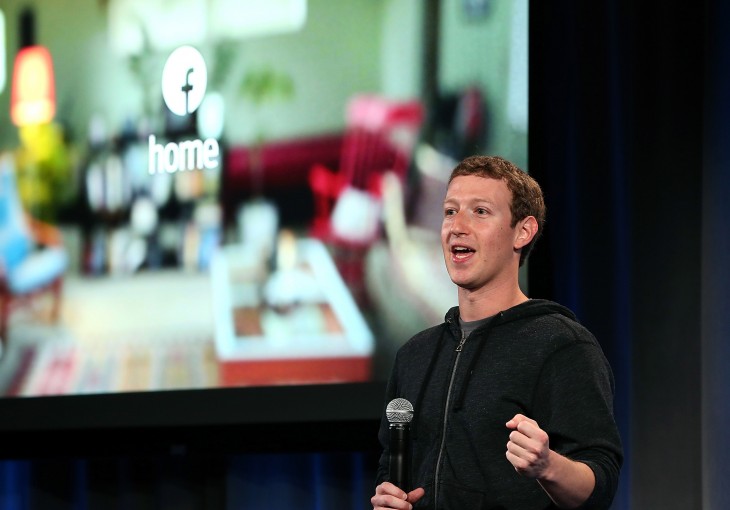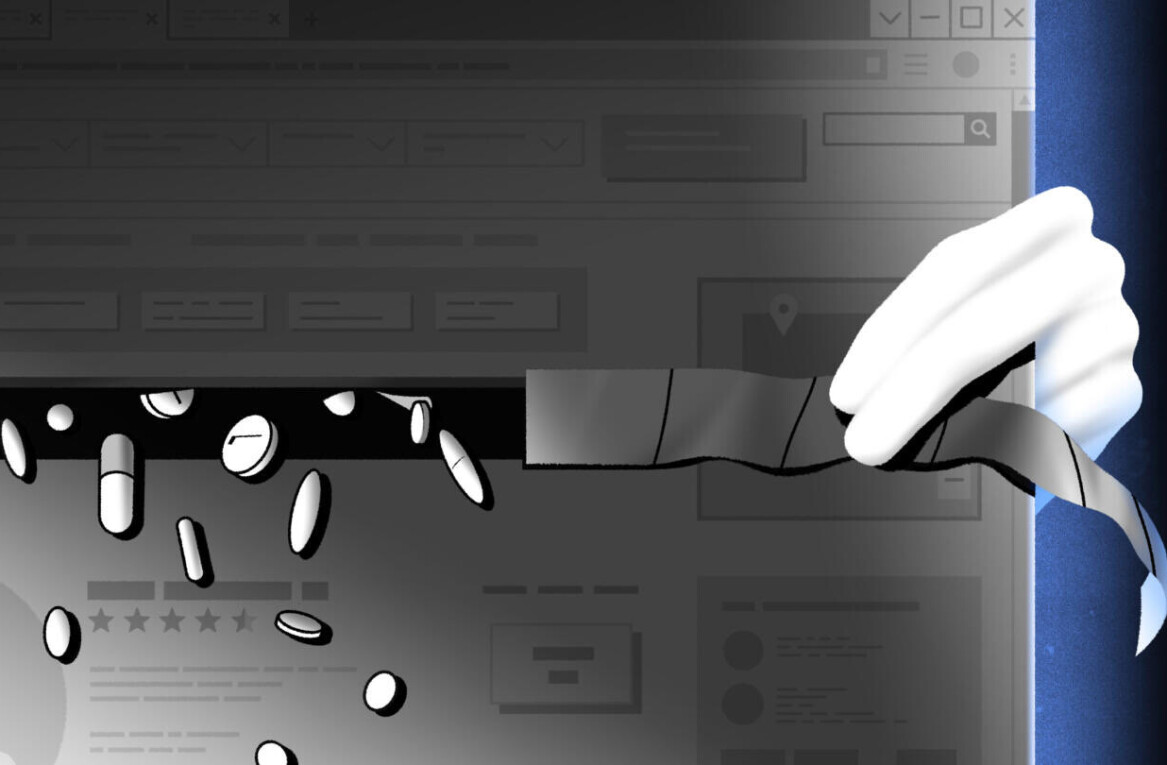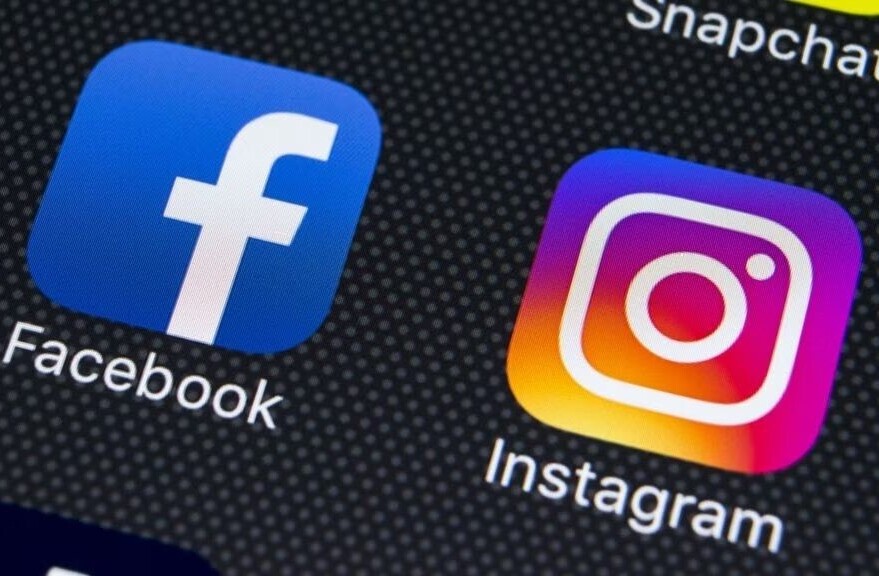
A decade ago, four friends launched a service in their Harvard dorm room. TheFacebook.com was originally supposed to be just a social network, but what wound up happening over the the course of its history surprised even the man who would be the face of the company.
Sure, the Aaron Sorkin version of “The Social Network” provides a compelling, albeit controversial, tale about one main part of Facebook’s history but in the past 10 years, there’s no denying that Mark Zuckerberg’s creation has had a significant impact upon how work is done, the way we communicate, and our society.
For most people Facebook has simply been a social network, a place where we can post photos, share the trials and tribulations of our lives, and play games with one another, but there’s a deeper meaning behind it all.
Zuckerberg remarked on the historic milestone, saying in a statement earlier this month:
“It’s been an incredible journey so far, and I’m so grateful to be a part of it. It’s been amazing to see how people have used Facebook to build a real community and help each other in so many ways. In the next decade, we have the opportunity and responsibility to connect everyone and to keep serving the community as best we can.”
In this piece, we take a look at Facebook’s evolution from a simple social network to a platform that has become extensively integrated not only with the world, but our lives.
If you’d like to view this post on a single page, you can do so here.
Next: Privacy readjusted, but not forgotten
Privacy readjusted, but not forgotten
One of the things that have become synonymous with Facebook is privacy. With the popularity of user-generated content, privacy is of the utmost concern for users and, believe it or not, companies that run these services. However, as Facebook rolls out new products and updates, it is often faced with the backlash from its users who fear that a little bit more of their privacy is being sacrificed.
One of the earliest protests against Facebook’s efforts came about in 2006 when a Northwestern University student by the name of Ben Parr created a group called “Students Against Facebook News Feed (Official Petition to Facebook)” and amassed a membership of over 284,000 students upset over the introduction of the News Feed on the social network. The issue at hand: News Feed was too intrusive.
This revolt continued years later when Facebook made a change in its Terms of Use policy. This time the uproar came about when Zuckerberg included a stipulation that while information on the social network was owned by the user, if it was removed, Facebook would retain the rights to use it how they want, including in advertisements. This sent the community in a tizzy and even a clarification post from the company CEO did nothing to diminish the protesters’ resolve. Eventually Facebook acquiesced and retracted its changes.
In the present day, there are those who still maintain that Facebook is doing more harm than good. The company has continually sparred against consumer privacy groups such as the Electronic Frontier Foundation (EFF) and the Center for Digital Democracy.
Let’s also not forget about Facebook’s controversial Beacon online ad system from 2007. This was the advertising platform that sent messages to a user’s friends informing them of what they were buying on websites and received criticism over its failure to allow users to opt out. It was viewed as a highly invasive form of online tracking that monitored your activity to help target ads to you. Soon after its release, then-vice president Chamath Palihapitiya told the New York Times:
“Whenever we innovate and create great new experiences and new features, if they are not well understood at the outset, one thing we need to do is give people an opportunity to interact with them. After a while, they fall in love with them.”
Unfortunately for Palihapitiya and Facebook, users didn’t “fall in love” with Beacon and the program was revised a month later to enable users to turn it off completely.
Facebook has also settled out of court challenges brought up by the US Federal Trade Commission (FTC) regarding claims that it provided user data to advertisers even though it said it would keep them private. And it looks like Facebook will continue to be finding itself battling things out with the law. This week, concerned parents indicated that they may sue Facebook, claiming the social network should be prevented from using images of minors in advertisements unless explicitly granted permission from the parents. The advocacy group Public Citizen believes that the $20 million settlement Facebook made in 2013 isn’t enough and is seeking remedy in a court of law.
Naturally the company disagreed, saying in statement to the San Francisco Chronicle:
“The court-approved settlement provides substantial benefits to everyone on Facebook, including teens and their parents, and goes beyond what any other company has done to provide consumers visibility into and control over their information in advertising. The same arguments on state law were raised and rejected by the court last year, and a dozen respected groups continue to support the settlement.”
What’s fascinating is that we’ve never seen protests about privacy of this magnitude about any other website or online service. As former Facebook CTO Bret Taylor told us, it’s a matter of self-ownership that has empowered users to challenge the company on what the social network needs. He said that as people begin to use technology like Facebook more actively and participate by contributing content, you’re changing the relationship — it’s no longer about just a piece of software on the Internet, but rather a piece of you and this can pass off a sense of responsibility to shape the service.
Next: Evolving privacy settings
Amid all of the legal battles the company is dealing with, Facebook has remained undeterred in its mission to further connect millions of people around the world. It recognizes that not everyone will have the same tolerance over perceived reductions in privacy, and has made it a point to help educate users about how to tweak their settings. After all, the fact that you might want your photos to be publicly viewable may be different from your friend who is less inclined to “live in public”.
Revamped privacy settings began rolling out to all users back in December 2012, all intended to provide Facebook users with more visible controls. In October 2013, the social networking company also adjusted the privacy features for teenagers as well. It also recognizes that there are a variety of user types on Facebook, so it’s been busy crafting guides for different markets seeking to educate groups like domestic violence survivors.
One of the things that Taylor says helped contribute to Facebook’s longevity is the company’s willingness to change with the trends and adjust accordingly. Privacy is obviously something that the company pays attention to (whether it’s effective at it remains disputed in the court of public opinion).
But unlike MySpace, Friendster, Twitter, and other social services, Facebook recognizes that there are multiple audiences using it, all for a variety of reasons so a “one-size fits all” approach isn’t going to help. So while you may have a single account, you may use it to interact with your family and friends under certain circumstances while also utilizing it in a professional networking capacity. Regardless of the intent, some people just don’t want to cross the streams.
Next: Here’s to the next 5 billion
Here’s to the next 5 billion
Throughout all the controversial privacy decisions Facebook has made, the company has remained committed to its mission over the past decade: to connect as many people with one another as possible. Sure, at first it was thought of as a social network, but it has evolved beyond that, possibly seeking to avoid the same unfortunate events that have plagued its predecessors, such as Friendster, a service that wound up being a social gaming site big in Southeast Asia, and MySpace, which wound up becoming Myspace (little “s”) and focused on music.
Today, the company counts more than 1.23 billion monthly active users — this is way more than either of its predecessors have accumulated in their years of popularity. It has found new ways to keep users engaged, whether that’s by bringing its service away from the desktop Web browser experience and to mobile devices (albeit a very rocky process, but ultimately the right decision), the launch of a platform to boost its ecosystem, and the launch new products aimed at bringing brands and consumers together in a social capacity.
But you know what’s cooler than 1 billion users? 5 billion more. This is Zuckerberg’s next goal and he intends on doing that by making the Internet more accessible to more people around the world. While getting users to post their personal and professional content to the social network, Zuckerberg has transformed it into a virtual world of sorts where ideas can have real-world offline consequences. One need only look at the Arab Spring movement in 2011 where protest organizers took to Facebook and Twitter to organize demonstrations and events.

One of Facebook’s main approaches to connecting the next 5 billion people is through its Internet.org initiative, launched in August 2013. The company estimates that nearly two-thirds of the world are without basic Internet access and by helping increase access, more knowledge will be shared. In a video touting Internet.org, Zuckerberg said:
“When I was getting started with Facebook, I could build it because I had access to the Internet and a few basic tools that gave me what I needed to build this for the world. And if we can get to a point where everyone around the world has access to those same tools, then everyone is going to be able to benefit from the innovation and ideas and hard work of billions of people around the world.”
But while undertaking such a global project is commendable, let’s not be mistaken into thinking that there isn’t an ulterior motive for it. The benefit to the company is that more people are able to access Facebook — a win-win for all parties, or so we’re meant to believe.
Nevertheless, Facebook isn’t waiting for Internet.org to move forward full-steam. Instead, it’s been working on architectural solutions for its mobile applications to ensure that they’ll work across various devices, no matter whether users are on a smartphone or feature phone or if they’re on WiFi or have a data plan.
Next: How businesses view social
How businesses view social
When asked to define Facebook, most people will probably say it’s a social network. It’s something that businesses have examined over the past decade and started to apply to their product workflow. Companies like Salesforce, Jive Software, Microsoft’s Yammer, Zendesk, Huddle, and others have built not only products, but their business around the notion of being social within the enterprise, and it’s helping increase usage and growth.
Peter Coffee, Salesforce’s Vice President for Strategic Research, told us Facebook managed to create a huge expectation with customers that companies can be social, instead of the one-to-many communication style that you find on Mad Men. In today’s world, people have a higher expectation when they reach out to a company – that it will respond with a personalized, conversational approach across multiple communication channels.
Under the traditional model of customer support, businesses would respond to inquiries and complaints by phone, email, or postal mail. Facebook has destroyed that paradigm and created a new one where channels are no longer siloed and companies need to be everywhere that a customer is.
Coffee recounted a meeting soon after he joined Salesforce in 2007 where CEO Marc Benioff spoke with his senior managers. Benioff asked his team who was on Facebook and a “small fraction” raised their hands. The result was that Benioff instructed everyone else to sign up for the social network to get acquainted with it, as he recognized the potential of the service. Coffee remarked that “managers need to understand the model because it’s the future of the way our customers are going to be able to work.”
Interestingly, Coffee doesn’t think that Facebook changed the rules about social media. On the contrary, it’s more about social behavior. The difference is more than semantics — it’s about having an organizational change to understand it. It’s one thing to support a Bring Your Own Device (BYOD) policy, but it’s another to embrace the concept and philosophy behind why such a policy is needed. At a roundtable event in December 2012, then-Github CEO Tom Preston-Werner said the world was becoming a more social place, thanks to the introduction of services like Twitter and Facebook.
But what was it about Facebook, rather than predecessors like Myspace, that caused this transformation in the business world? Coffee points to an article written in TechNews World in 2007 entitled “MySpace Is A Natural Monopoly” to help explain the answer. In the piece, it paints a rosy future for MySpace because the economic “gain” of a single social network is great enough to eliminate all other rivals:
“MySpace is unquestionably a communication and information network which, like any other kind of network, grows in value with each additional user.
“Conversely, the consumer “cost” of using multiple social networks, while not as astronomical as having disparate telephone networks, is still higher than alternating between multiple instant messaging programs.
“All of this is to say MySpace looks like a natural monopoly and, judging from usage patterns, certainly appears to be behaving like a natural monopoly.”
We all know what happened to MySpace: it got trumped by Facebook and faded off into relative obscurity. Coffee says that Facebook was successful because it thought of itself as a platform, not an application. Repeating the point made earlier in this piece, the company never thought of itself as just a social network — it’s a vehicle that connects users with others around the world, regardless of the device that they’re on.
Facebook’s model has been replicated throughout the enterprise by a variety of services. One need only look at Salesforce Chatter, Yammer, Huddle, Yahoo-owned Tomfoolery, Socialcast, Socialtext, Citrix’s Podio, Producteev, and more to see the similarities to Zuckerberg’s creation.
Next: Social advertising
Besides changing the status quo of the business world, Facebook has also had an impact on how companies interact with customers. As Coffee alluded to earlier, it’s a change in social behavior that’s at play here. Before, digital marketing included programs involving email, banners, websites/microsites, and text-messaging. There was also this notion about online advertising, but that was a cost-per-impression / pay-per-click model whereby businesses would pay to have a text-based ad featured when a specific search query was entered into Google, Yahoo, and Bing.
Over the past few years, Facebook has been releasing new advertising products aimed at helping monetize its platform and also giving businesses a reason to use it. Instead of displaying banner ads, Facebook decided to leverage the data it holds about users to make sure that the campaigns are relevant to them.
It hasn’t always been an easy road to implement updates to its ad platform. In 2007, when it released Beacon, the community responded saying that it was no good, citing privacy concerns. After a class-action lawsuit, Facebook changed the program to require explicit opt-in from the user for third-party sites to publish data to the social network.
Amid the controversy, Facebook’s advertising offering has given businesses the ability to reach their targeted audience. Unlike with search engine marketing where you’re hoping that the people typing your targeted search queries are your intended audience, Facebook’s platform enables a marketing manager to schedule ads to be displayed when specific ages, locations, interests, and other conditions are met.
To help mobile app developers gain more downloads, Facebook has become one of the first to introduce mobile app install ads. These are ads that appear when a user is on a mobile device, offering the option to install an app compatible with that device. Facebook touted that these install ads generated a 50 percent higher click-through rate and 8-10x reach for its trial partners.
Since their launch, Facebook has been modifying mobile app install ads occasionally, giving advertisers more ways to customize targets. Now ads can be displayed based on a user’s data plan, operating system, or even by unique calls-to-action like “Open Link”, “Use App” and “Shop Now”.
Based on last quarter’s earnings, Facebook’s ad platform is a success — at least for Zuckerberg’s company. In Q4 FY2013, it generated $2.34 billion just from advertising — a huge chunk of the company’s revenue (payments and other fees was $241 million). Of the amount generated from advertising, 53 percent came just from mobile.
And while Facebook has offered businesses new tools to converse with their customers, like Pages, Questions and more, perhaps the biggest win for the company is its ad platform. No longer do you need to pay, spray, and pray when doing advertising — social media has evolved the game and Facebook certainly capitalized on it.
Next: Growing offline and supporting the community
Growing offline and supporting the community
While the social network has grown rapidly, so too has the company. Facebook has offices located around the world, including in New Zealand, Indonesia, India, Japan, China, Malaysia, South Korea, Australia, Singapore, Latin America, the Netherlands, Germany, Italy, Poland, the UK, France, Sweden, the United Arab Emirates, Israel, Ireland, and throughout North America.
Opening up multiple offices isn’t that surprising – all large corporations do it – but in Facebook’s case, it’s a bit different as all the offices are working on the same project — a online network dedicated to connecting as many people together. Unlike Zynga and many other companies, there’s only one real product at Facebook: Facebook.
We had an opportunity to speak with Serkan Piantino, Facebook’s site director for its New York office, who told us that although teams are spread out throughout the world, everyone still has a focus on creating the best Facebook possible.
Tech company satellite offices are often run like individual startups, managing their respective products – how does that work at Facebook, where everything that they touch could impact other teams’ products? Piantino says that it boils down to where the central thinking resides — and that can depend on a variety of factors such as the personality of the team, the environment, and other factors.
Facebook New York was the company’s first engineering office to be established away from the West Coast and is run by Paintino. Opened in 2012, it has produced quite a few products that many people would be familiar with, including EdgeRank, Facebook’s News Feed algorithm which was replaced in 2013. The team also produced the new Timeline that rolled out last year.
Piantino, a long-time Facebook employee, was tapped for this role because he saw a need for the company to establish an outpost in America’s largest city by population, and one with a blossoming technology community. As the company seeks to attract top talent to add to its ranks, it’s going to need to make it possible for them to not have to upheave their lives in order to work there. Piantino says that the New York City area is the center of so many industries and is a “great crucible for the type of engineering that we do: iterative, collaborative, etc.”
Facebook’s products are so integrated with each other that they cannot be siloed into one specific office, which is why only the central thinking behind it is what’s assigned to an office. An example is Graph Search — this product was unveiled in 2013 to become the a social media search engine. The team behind it wasn’t based in New York, Seattle, or Los Angeles. Rather, it was created by teams in both Menlo Park and London, but Piantino’s engineering team had some exposure to it.
Some times it makes perfect sense where to assign product thinking. Facebook New York is tasked with working on location, advertising efforts, photos, infrastructure, and other things. In other cases, certain other products may be better assigned to other parts of the world — perhaps sticker development would be in the Los Angeles office while server infrastructure would be done at its Prineville, Oregon facility.
Facebook wants to help bolster the technology ecosystems in the cities in which it opens offices. One of the things that Piantino was adamant about was the company’s role in helping to grow the community in NYC. He says that the office has been home to hackathons and events, formed partnerships with the likes of CS4HS NYC (an annual grant program started by Google), Union Square Ventures managing partner Fred Wilson and others to help promote computer science courses in the classroom.
Piantino believes that since Facebook is going to be around for a while, it’s going to put forth the effort to help make the city better. And while much of our focus here has been on New York City, this philosophy has also been demonstrated in the company’s other offices around the world.
A big part of Facebook’s culture is its ‘hacker’ approach, something that you’d see demonstrated via messages plastered all over its offices — it even has a path in its Menlo Park headquarters called Hacker Way. But it’s more than just a tag line, as the company practices what it preaches. Every year there are multiple hackathons put on by Facebook. Most are internal, but there are some in which it invites others to participate, such as for university students in 2012, Windows 8, and for the photography world when it teamed up with Aviary for the fourth annual Photo Hack Day.
Facebook has also given back to the technology community. It has been the backer behind the Open Academy, a program helping computer science students become better software engineers. The company has also contributed to the open source framework.
The biggest contribution is the Open Compute Project that Facebook launched three years ago. This initiative encourages participating companies to improve infrastructure, hardware, and server performance by sharing ideas with one another.
Other open source efforts include Presto, its homegrown SQL query engine,Origami, a free design prototype for the Quartz composer, and more spread across infrastructure, mobile, and Web.
Next: The Facebook Mafia?
The Facebook Mafia?
On May 18, 2012, Facebook became a public company. While a series of unfortunate events caused its stock to have a disappointing performance, it has slowly risen and at the time of publication it is at $67.09, a 76 percent increase from its IPO price of $38. In its 2013 annual earnings report, the company revealed that it had generated more than $7.8 billion in revenue, a 55 percent year-over-year increase. Zuckerberg said in a statement that “It was a great end to the year for Facebook. We’re looking forward to our next decade and to helping connect the rest of the world.”
While we’ve been talking about the technology Facebook has created, we haven’t spoken about the people who have split away from the company and started their own ventures. There are those who have gone on to launch their own startups, while others have become venture capitalists. It’s logical to see long-time employees going out on their own and creating companies themselves, but is this the Facebook version of the so-called PayPal mafia?
Here’s a look at a few notable companies and ventures that were started by former Facebook employees over the past decade:
Dustin Moskovitz is one of the co-founders of Facebook and served as the company’s first Chief Technology Officer (CTO). In October 2008, he left the company in order to launch Asana, a productivity management service that he founded alongside another former Facebooker Justin Rosenstein.
Chamath Palihapitiya joined Facebook in 2006 after stints at AOL and Mayfield Fund. During his tenure, he helped oversee the social networking company’s mobile and international programs. An investor on the side, he eventually left Facebook in 2011 to start The Social+Capital Partnership where he invested in companies like Yammer and SecondMarket. He is also one of the owners of the National Basketball Association’s (NBA) Golden State Warriors.
Prior to the formation of Path, Dave Morin was the senior platform manager at Facebook where he is credited with creating the Facebook Platform and Connect (now known as Facebook Login). The development of a platform enabled third-party services and applications to leverage a user’s social graph and help make content more relevant to them. Connect helped give users a single login authentication protocol so they didn’t have to worry about trying to remember passwords and could connect their profile data with supported applications. Morin left in 2010 after four years to start Path.
Adam D’Angelo was another early Facebook employee and served as its CTO and vice president of engineering. He left the company in 2008, when it was reported that he had been feeling “tired and burnt out.” About a year later, he teamed with former Facebooker Charlie Cheever (who worked with Dave Morin on Facebook Connect) to launch the Q&A social network Quora.
Of course, the Facebook mafia must include Sean Parker, the co-founder of Napster and the first president of Zuckerberg’s company. He spent a year in that role helping the company raise money, including from venture capitalist Peter Thiel. After parting ways with Facebook, Parker went on to make investments in companies like Spotify, WillCall, and Votizen. He also launched Airtime, which hasn’t proved successful.
Steve Chen spent a few months working at Facebook as a senior software engineer in 2005. He left in order to start a video service called YouTube (you may have heard of it), working alongside Chad Hurley and Jawed Karim.
Chris Hughes is another Facebook co-founder who served as a spokesperson for the company. He went on to join Barack Obama’s 2008 presidential campaign and helped coordinate the online initiatives — a movement which is widely believed to have helped Obama’s election. Afterwards, he went on to be the Entrepreneur in Residence at General Catalyst Partners before eventually purchasing a majority stake in The New Republic magazine.
Randi Zuckerberg served as Facebook’s director of market development and also as its spokeswoman. During her tenure, she organized partnerships with ABC News for the 2008 presidential primaries of both the Republican and Democratic parties. She also integrated Facebook with CNN’s Inauguration Day program. She is the elder sister of Mark Zuckerberg and left the company in 2011 to start a new firm called Zuckerberg Media, which has produced shows for The Clinton Global Initiative, Cirque du Soleil, Conde Nast, and Bravo (including that short-lived series “Start-Ups: Silicon Valley“).
Bret Taylor joined Facebook by way of acquisition of his startup FriendFeed in 2009. He served as CTO where he oversaw the development of the social network’s platform and mobile products. He left in 2012 to launch Quip, a office productivity software platform.
Next: The teenage years of Facebook
The teenage years of Facebook
We’re now entering the second decade of Facebook’s existence, but what will happen to the company when we look back in 2024? If the culture and philosophy of Facebook remains in place, there’s a good chance that we’ll be talking about it’s latest endeavors. Taylor once told us that what has made Facebook so successful amid all the competition from the likes of FriendFeed, MySpace, and others is its ability to change with the shifts in technology and user behavior.
There are those who may not share that view, and look to a couple of recent issues that have popped up as cracks in Facebook’s stability armor. During an earnings conference call in October 2013, Chief Financial Officer (CFO) David Ebersman said that Facebook “did see a decrease in daily users specifically among younger teens.”
Digital agency iStrategyLabs published a report last month that said teenage users on Facebook have declined 25.3 percent over the past three years, with 3 million fewer addressable 13-17 year olds today compared to 2011.
Facebook insists that there is nothing to worry about, but with the rise of Snapchat, WhatsApp, Line, Kik, and similar services, could these sought-after “taste makers” be heading off to greener pastures?
Another point of contention is whether or not businesses will continue to see value in Facebook. In October 2013, Forrester analyst Nate Elliott published an “open letter” to Zuckerberg with the message: “Facebook is failing marketers.” He claimed that while marketers are spending millions of dollars on the social network, only a few find success. And while Facebook has certainly shown that brands are interested in its platform, what’s uncertain is if that will continue to be over the next 10 years.
We’ve made the point multiple times throughout this piece that Facebook is more than a social network — it’s a communication platform that has impacted practically every facet of our lives. It’s moved beyond just simply being a Web-based entity to making itself accessible on mobile devices. There are countless apps that have integrated with the social network in one way, shape, or form — they connect to Facebook at least 850 million times a month just through Facebook Login.
Mobile should continue to be a big area that Facebook is devoting resources to, thanks to its acquisition of companies like Parse, Instagram, Glancee, and others. The amount of data collection possible from mobile devices means that we’ll likely see more innovative products from the company. As the ‘Internet of Things’ phenomenon continues to increase in popularity, Facebook could play a pivotal role in that area as well.
Facebook has been finding new ways to keep users engaged, including launching Paper, a visual and social news app. And Zuckerberg’s not done yet, telling investors and the press during Facebook’s last earnings call, “One theme that should be clear from our work on products like Messenger, Groups, and Instagram is that our vision for Facebook is to create a set of products that help you share any kind of content you want with any audience you want.”
As we look towards Facebook’s next decade of existence, it’s certain that Zuckerberg’s mission remains the same as it did back in 2004. With his motto of “build, grow, monetize“, Facebook remains undeterred in its pursuit of continuing to make the world a much smaller and connected place.
Don’t miss:
- Facebook’s ex-CTO Bret Taylor on the site’s 10 year milestone, lessons learned from Mark Zuckerberg
- ‘Facebook’s 2013: The quest for a ‘mobile-best’ platform
Photo credits: JONATHAN NACKSTRAND/AFP/Getty Images, KAREN BLEIER/AFP/Getty Images [1] [2], Justin Sullivan/Getty Images [1] [2] [3] [4] [5], AHMAD GHARABLI/AFP/Getty Images, John Moore/Getty Images, MLADEN ANTONOV/AFP/Getty Images, ROBYN BECK/AFP/Getty Images, photo of Facebook New York via Facebook, Spencer Platt/Getty Images, winners from Facebook’s 2012 university hackathon via Facebook, Max Morse/Getty Images, ERIC PIERMONT/AFP/Getty Images, Ralph Orlowski/Getty Images for Burda Media, and OLIVIER MORIN/AFP/Getty Images
Get the TNW newsletter
Get the most important tech news in your inbox each week.
